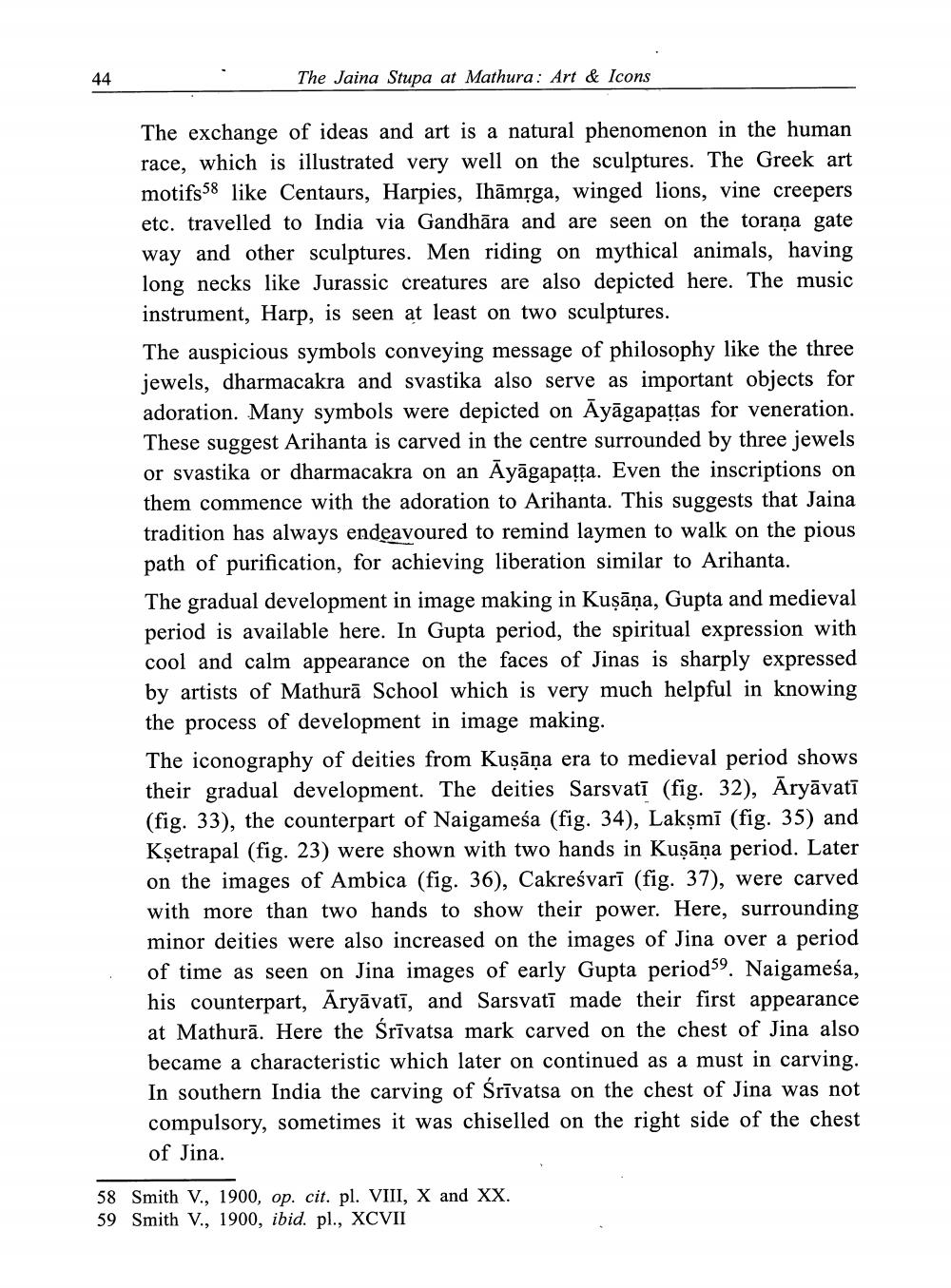________________
The Jaina Stupa at Mathura: Art & Icons
The exchange of ideas and art is a natural phenomenon in the human race, which is illustrated very well on the sculptures. The Greek art motifs58 like Centaurs, Harpies, Ihāmrga, winged lions, vine creepers etc. travelled to India via Gandhāra and are seen on the toraņa gate way and other sculptures. Men riding on mythical animals, having long necks like Jurassic creatures are also depicted here. The music instrument, Harp, is seen at least on two sculptures. The auspicious symbols conveying message of philosophy like the three jewels, dharmacakra and svastika also serve as important objects for adoration. Many symbols were depicted on Āyāgapattas for veneration. These suggest Arihanta is carved in the centre surrounded by three jewels or svastika or dharmacakra on an Ayāgapatta. Even the inscriptions on them commence with the adoration to Arihanta. This suggests that Jaina tradition has always endeavoured to remind laymen to walk on the pious path of purification, for achieving liberation similar to Arihanta. The gradual development in image making in Kuşāna, Gupta and medieval period is available here. In Gupta period, the spiritual expression with cool and calm appearance on the faces of Jinas is sharply expressed by artists of Mathurā School which is very much helpful in knowing the process of development in image making. The iconography of deities from Kuşāņa era to medieval period shows their gradual development. The deities Sarsvatī (fig. 32), Āryāvatī (fig. 33), the counterpart of Naigameśa (fig. 34), Lakşmī (fig. 35) and Kșetrapal (fig. 23) were shown with two hands in Kuşāņa period. Later on the images of Ambica (fig. 36), Cakreśvarī (fig. 37), were carved with more than two hands to show their power. Here, surrounding minor deities were also increased on the images of Jina over a period of time as seen on Jina images of early Gupta period59. Naigameśa, his counterpart, Āryāvatī, and Sarsvatī made their first appearance at Mathurā. Here the Śrīvatsa mark carved on the chest of Jina also became a characteristic which later on continued as a must in carving. In southern India the carving of Śrīvatsa on the chest of Jina was not compulsory, sometimes it was chiselled on the right side of the chest of Jina.
58 Smith V., 1900, op. cit. pl. VIII, X and XX. 59 Smith V., 1900, ibid. pl., XCVII




